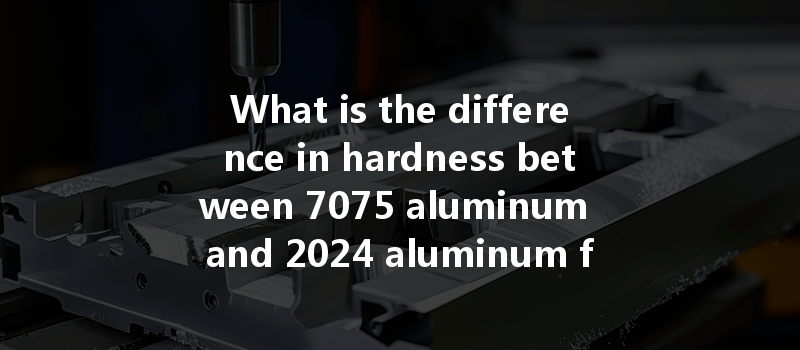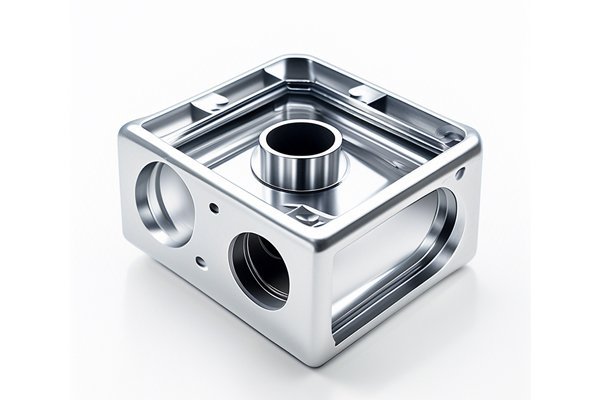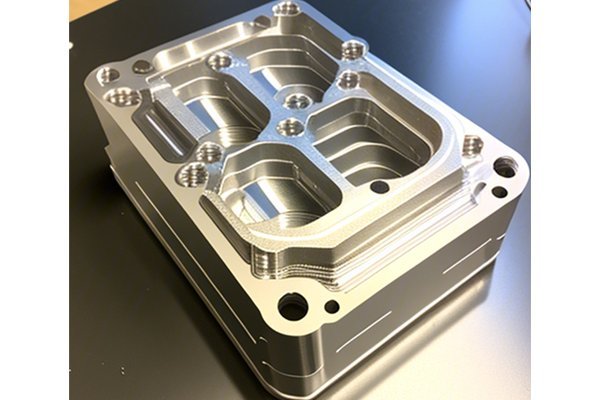Did you know that aluminum is one of the most commonly used metals in the aerospace, automotive, and manufacturing industries due to its excellent strength-to-weight ratio? Among the various aluminum alloys available, 7075 and 2024 are particularly popular, especially in applications requiring high strength and lightweight materials. However, the choice between these two alloys often raises the question: What is the difference in hardness between 7075 aluminum and 2024 aluminum for CNC machining? This article will delve deep into the properties of these two alloys, examine their suitability for CNC machining, and provide a comprehensive guide to making informed decisions based on hardness and other factors.
The Basics of Aluminum Alloys
Understanding Aluminum Alloys
Aluminum alloys are primarily categorized into two groups: wrought and cast. Wrought aluminum alloys are created through mechanical processes such as rolling or forging, and they are generally more suitable for machining. The Aluminum Association categorizes wrought aluminum into series numbered from 1xxx to 8xxx based on their primary alloying elements.
2024 Aluminum Alloy: This alloy belongs to the 2xxx series, primarily alloyed with copper. Known for high strength and excellent fatigue resistance, 2024 is commonly used in aerospace applications, often in the form of sheets or extrusions.
7075 Aluminum Alloy: Part of the 7xxx series, 7075 is primarily alloyed with zinc and is known for its exceptional strength. It is often used in applications requiring high strength and low weight, making it a popular choice in the aerospace sector.
Importance of Hardness in CNC Machining
Hardness is a critical mechanical property that affects an alloy’s performance during machining. It determines how well the material can withstand wear and deformation under pressure and impacts machinability, tool life, and surface finish. Measuring hardness gives engineers and machinists essential insights into operational limits and aids in choosing appropriate tools and cutting parameters. Therefore, understanding the hardness difference between 7075 and 2024 becomes crucial for successful machining.
Comparing Hardness: 7075 Aluminum vs. 2024 Aluminum
Hardness Measurement
Hardness is typically assessed using different scales such as Rockwell (HR), Brinell (HB), or Vickers (HV). Among these, the Rockwell B and C scales are the most commonly applied in engineering contexts.
2024 Aluminum Hardness: Depending on the temper condition, 2024 alloys typically have a hardness between 150-160 HB (Brinell Hardness) or approximately 50-55 HRC (Rockwell C).
7075 Aluminum Hardness: Conversely, 7075 aluminum exhibits a higher hardness level, commonly found between 170-190 HB or roughly 70-78 HRC.
This fundamental difference in hardness means that 7075 aluminum is generally more resistant to wear and can withstand greater stress levels compared to
Factors Influencing Hardness
CNC Machining Considerations
Given the differences in hardness, the choice between 7075 and 2024 aluminum for CNC machining must reflect several planning and execution steps.
Tool Selection

Cutting Parameters
Machining Techniques
Applications of 7075 and 2024 Aluminum Alloys
Both alloys find varied uses across multiple domains, but the choice often aligns with their respective hardness levels.
Aerospace Industry
Automotive Industry
Sports and Recreation
In summary, the hardness difference between 7075 aluminum and 2024 aluminum significantly impacts machining processes and applications. 7075 offers greater hardness and strength, making it ideal for critical structural components in aerospace and high-performance applications. In contrast, 2024 provides excellent fatigue resistance and is preferred for applications requiring lightweight yet durable materials.
This understanding is crucial for engineers and manufacturers, as the choice between these two alloys can dictate the success of manufacturing processes, impact final product quality, and influence overall material performance. As you consider your next CNC machining project, think about the appropriate alloy choice and how it aligns with your specific needs. By doing so, you not only enhance product performance but also ensure cost-effectiveness and sustainability in your operations. Understanding the nuances of these materials can lead to informed decisions and successful applications in the fast-evolving landscape of manufacturing and engineering.






